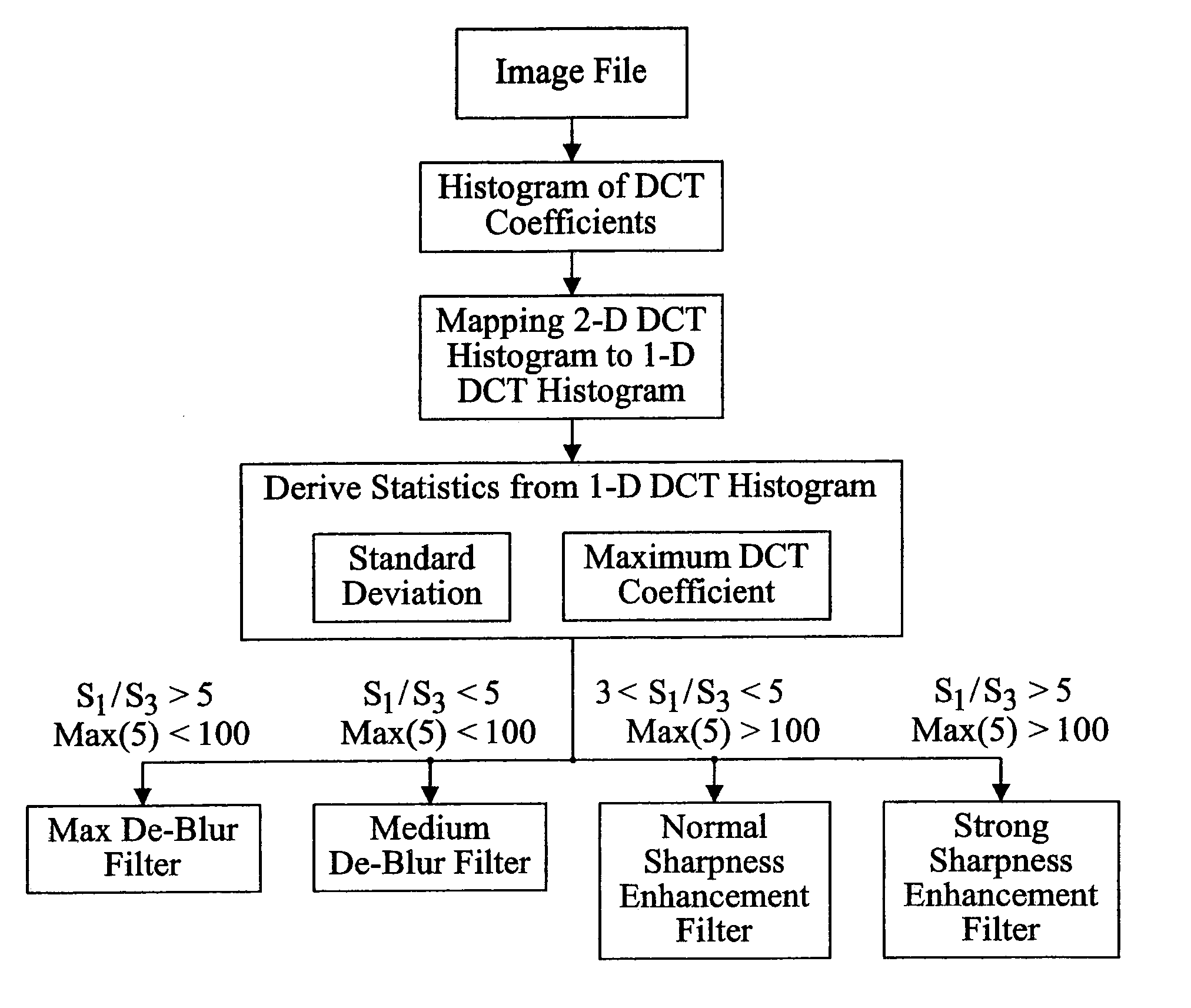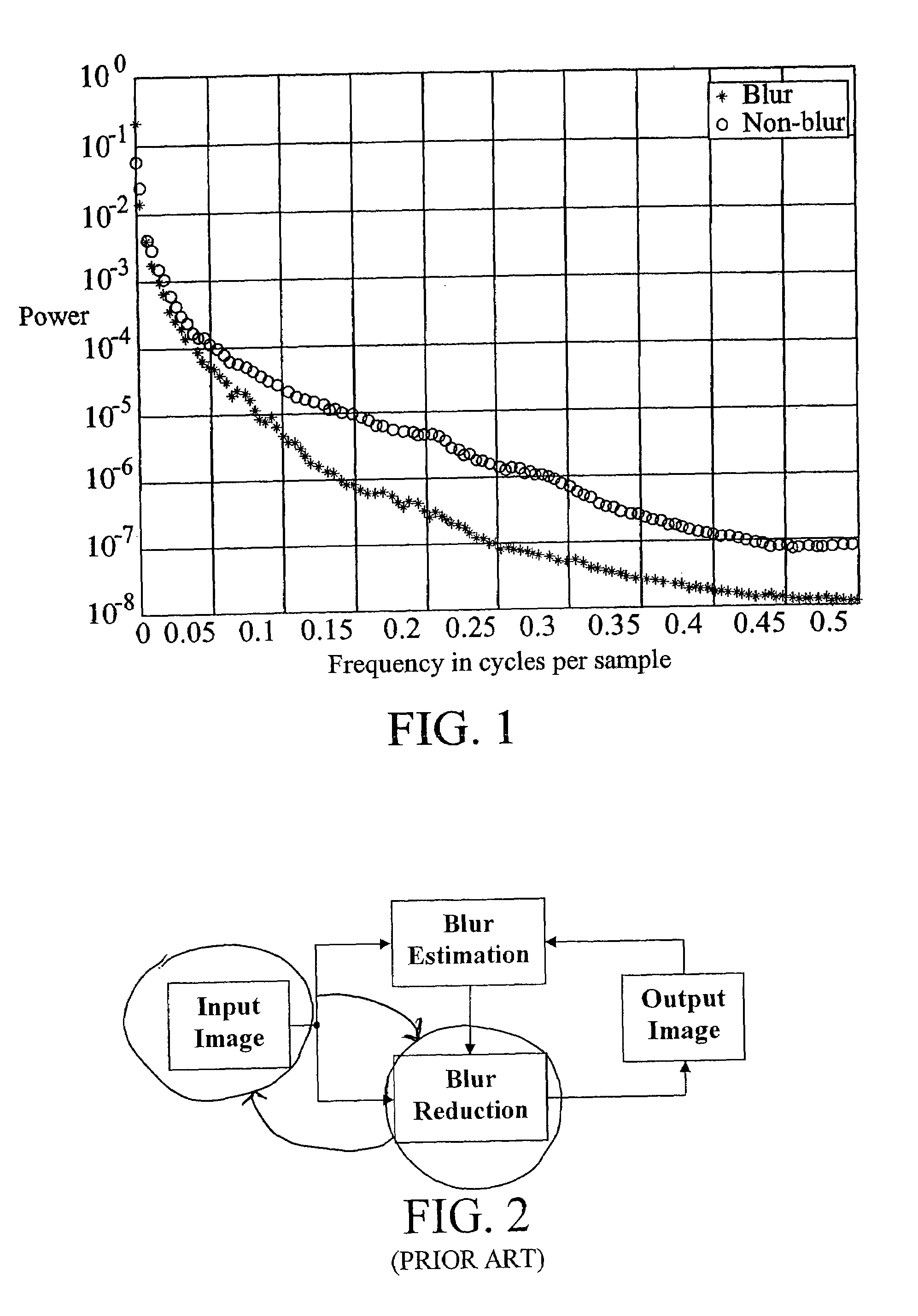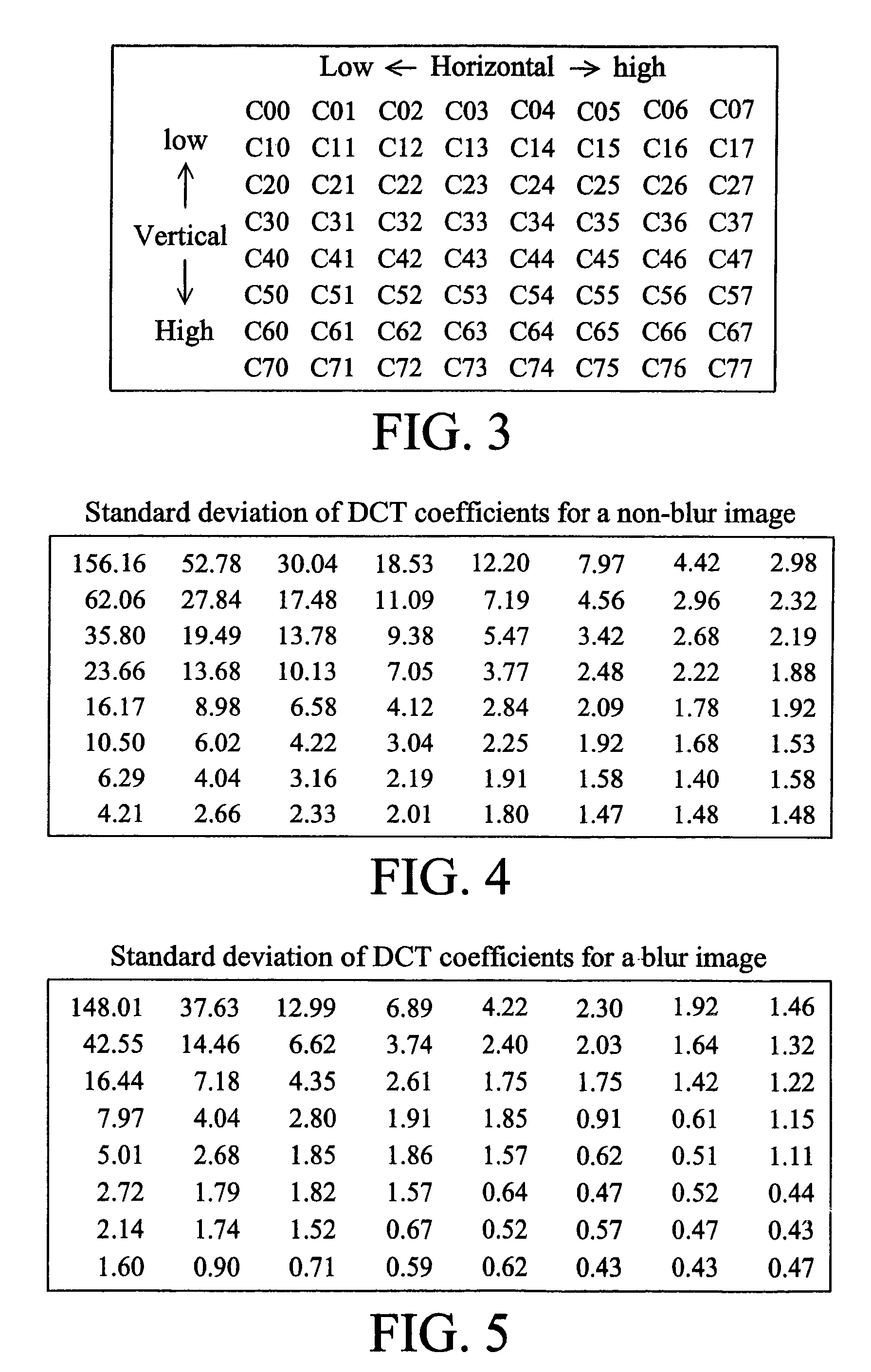Blur detection system
a detection system and image technology, applied in the field of digital image processing, can solve the problems of image blur in traditional, analog images such as color photographs that cannot be perceptibly reduced, and many real-world images lack sufficiently sharp edges to reliably estimate image blur, and the system that estimates image blur from the power spectrum of images
- Summary
- Abstract
- Description
- Claims
- Application Information
AI Technical Summary
Problems solved by technology
Method used
Image
Examples
Embodiment Construction
[0016]FIG. 2 illustrates a typical blur estimation and reduction system where an input image is sent to a blur estimation module to determine if blur exists, and if so, estimate the amount of blur. A blur reduction module determines whether to apply a blur reduction process, and if so, how much blur to reduce. The process may be iterative, if desired, such as repeatedly processing the input image through the blur estimation and reduction system until a blur threshold is reached.
[0017]Most digital images are stored in image formats that encode an image using the forward discrete cosine transform (DCT) function
[0018]F(u,v)=2nC(u)C(v)∑k=0n-1∑l=0n-1f(k,l)cos[(2k+1)uπ2n]cos[(2l+1)vπ2n]
and decode an image using the inverse DCT transform function
[0019]f(k,l)=2n∑u=0n-1∑v=0n-1C(u)C(v)F(u,v)cos[(2k+1)uπ2n]cos[(2l+1)vπ2n]
[0020]The forward DCT transform converts pixel information of a digital image in the spatial domain to energy, or power in...
PUM
 Login to View More
Login to View More Abstract
Description
Claims
Application Information
 Login to View More
Login to View More - R&D
- Intellectual Property
- Life Sciences
- Materials
- Tech Scout
- Unparalleled Data Quality
- Higher Quality Content
- 60% Fewer Hallucinations
Browse by: Latest US Patents, China's latest patents, Technical Efficacy Thesaurus, Application Domain, Technology Topic, Popular Technical Reports.
© 2025 PatSnap. All rights reserved.Legal|Privacy policy|Modern Slavery Act Transparency Statement|Sitemap|About US| Contact US: help@patsnap.com



